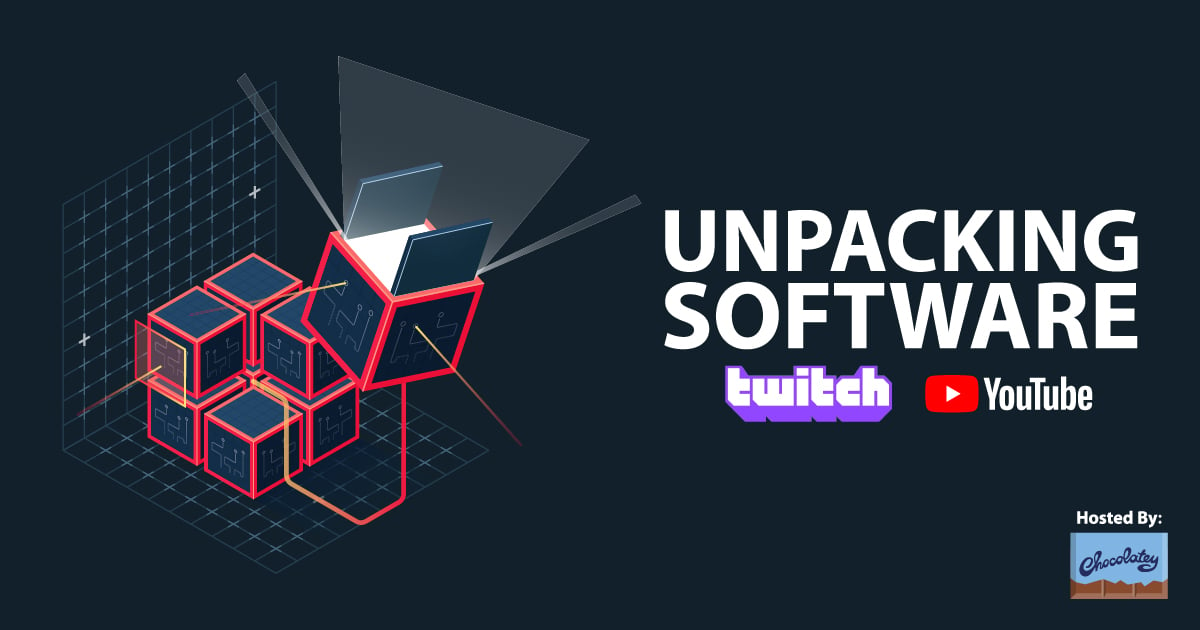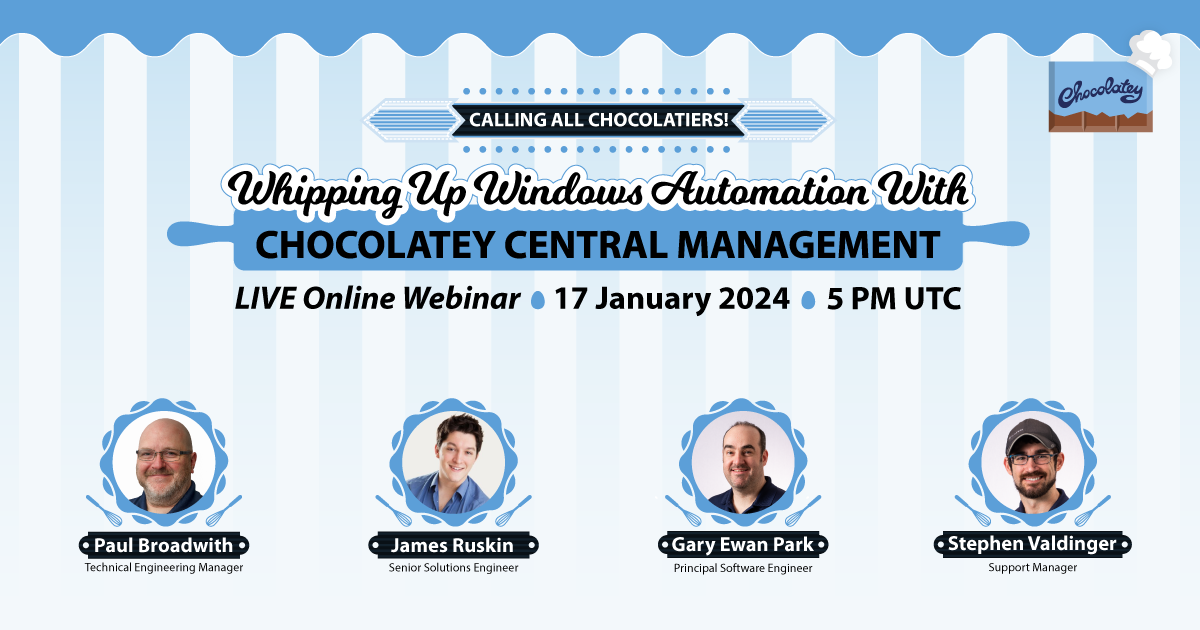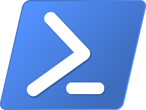
Downloads:
11,628
Downloads of v 1.5.17:
4,775
Last Update:
31 Mar 2015
Package Maintainer(s):
Software Author(s):
- Daniel Schroeder
Tags:
- Software Specific:
- Software Site
- Software License
- Package Specific:
- Package outdated?
- Package broken?
- Contact Maintainers
- Contact Site Admins
- Software Vendor?
- Report Abuse
- Download
Invoke-MsBuild PowerShell Module
- 1
- 2
- 3
1.5.17 | Updated: 31 Mar 2015
- Software Specific:
- Software Site
- Software License
- Package Specific:
- Package outdated?
- Package broken?
- Contact Maintainers
- Contact Site Admins
- Software Vendor?
- Report Abuse
- Download
Downloads:
11,628
Downloads of v 1.5.17:
4,775
Maintainer(s):
Software Author(s):
- Daniel Schroeder
Invoke-MsBuild PowerShell Module 1.5.17
Legal Disclaimer: Neither this package nor Chocolatey Software, Inc. are affiliated with or endorsed by Daniel Schroeder. The inclusion of Daniel Schroeder trademark(s), if any, upon this webpage is solely to identify Daniel Schroeder goods or services and not for commercial purposes.
- 1
- 2
- 3
Some Checks Have Failed or Are Not Yet Complete
Not All Tests Have Passed
Deployment Method: Individual Install, Upgrade, & Uninstall
To install Invoke-MsBuild PowerShell Module, run the following command from the command line or from PowerShell:
To upgrade Invoke-MsBuild PowerShell Module, run the following command from the command line or from PowerShell:
To uninstall Invoke-MsBuild PowerShell Module, run the following command from the command line or from PowerShell:
Deployment Method:
This applies to both open source and commercial editions of Chocolatey.
1. Enter Your Internal Repository Url
(this should look similar to https://community.chocolatey.org/api/v2/)
2. Setup Your Environment
1. Ensure you are set for organizational deployment
Please see the organizational deployment guide
2. Get the package into your environment
Option 1: Cached Package (Unreliable, Requires Internet - Same As Community)-
Open Source or Commercial:
- Proxy Repository - Create a proxy nuget repository on Nexus, Artifactory Pro, or a proxy Chocolatey repository on ProGet. Point your upstream to https://community.chocolatey.org/api/v2/. Packages cache on first access automatically. Make sure your choco clients are using your proxy repository as a source and NOT the default community repository. See source command for more information.
- You can also just download the package and push it to a repository Download
-
Open Source
-
Download the package:
Download - Follow manual internalization instructions
-
-
Package Internalizer (C4B)
-
Run: (additional options)
choco download invokemsbuild --internalize --source=https://community.chocolatey.org/api/v2/ -
For package and dependencies run:
choco push --source="'INTERNAL REPO URL'" - Automate package internalization
-
Run: (additional options)
3. Copy Your Script
choco upgrade invokemsbuild -y --source="'INTERNAL REPO URL'" [other options]See options you can pass to upgrade.
See best practices for scripting.
Add this to a PowerShell script or use a Batch script with tools and in places where you are calling directly to Chocolatey. If you are integrating, keep in mind enhanced exit codes.
If you do use a PowerShell script, use the following to ensure bad exit codes are shown as failures:
choco upgrade invokemsbuild -y --source="'INTERNAL REPO URL'"
$exitCode = $LASTEXITCODE
Write-Verbose "Exit code was $exitCode"
$validExitCodes = @(0, 1605, 1614, 1641, 3010)
if ($validExitCodes -contains $exitCode) {
Exit 0
}
Exit $exitCode
- name: Install invokemsbuild
win_chocolatey:
name: invokemsbuild
version: '1.5.17'
source: INTERNAL REPO URL
state: present
See docs at https://docs.ansible.com/ansible/latest/modules/win_chocolatey_module.html.
chocolatey_package 'invokemsbuild' do
action :install
source 'INTERNAL REPO URL'
version '1.5.17'
end
See docs at https://docs.chef.io/resource_chocolatey_package.html.
cChocoPackageInstaller invokemsbuild
{
Name = "invokemsbuild"
Version = "1.5.17"
Source = "INTERNAL REPO URL"
}
Requires cChoco DSC Resource. See docs at https://github.com/chocolatey/cChoco.
package { 'invokemsbuild':
ensure => '1.5.17',
provider => 'chocolatey',
source => 'INTERNAL REPO URL',
}
Requires Puppet Chocolatey Provider module. See docs at https://forge.puppet.com/puppetlabs/chocolatey.
4. If applicable - Chocolatey configuration/installation
See infrastructure management matrix for Chocolatey configuration elements and examples.
This package was approved as a trusted package on 31 Mar 2015.
A PowerShell module to make building projects with MsBuild easy. It provides many features like fire-and-forget, or build and wait to check if build succeeded.
#Requires -Version 2.0
function Invoke-MsBuild
{
<#
.SYNOPSIS
Builds the given Visual Studio solution or project file using MSBuild.
.DESCRIPTION
Executes the MSBuild.exe tool against the specified Visual Studio solution or project file.
Returns true if the build succeeded, false if the build failed, and null if we could not determine the build result.
If using the PathThru switch, the process running MSBuild is returned instead.
.PARAMETER Path
The path of the Visual Studio solution or project to build (e.g. a .sln or .csproj file).
.PARAMETER MsBuildParameters
Additional parameters to pass to the MsBuild command-line tool. This can be any valid MsBuild command-line parameters except for the path of
the solution/project to build.
See http://msdn.microsoft.com/en-ca/library/vstudio/ms164311.aspx for valid MsBuild command-line parameters.
.PARAMETER $BuildLogDirectoryPath
The directory path to write the build log file to.
Defaults to putting the log file in the users temp directory (e.g. C:\Users\[User Name]\AppData\Local\Temp).
Use the keyword "PathDirectory" to put the log file in the same directory as the .sln or project file being built.
.PARAMETER AutoLaunchBuildLog
If set, this switch will cause the build log to automatically be launched into the default viewer if the build fails.
NOTE: This switch cannot be used with the PassThru switch.
.PARAMETER KeepBuildLogOnSuccessfulBuilds
If set, this switch will cause the msbuild log file to not be deleted on successful builds; normally it is only kept around on failed builds.
NOTE: This switch cannot be used with the PassThru switch.
.PARAMETER ShowBuildWindow
If set, this switch will cause a command prompt window to be shown in order to view the progress of the build.
.PARAMETER ShowBuildWindowAndPromptForInputBeforeClosing
If set, this switch will cause a command prompt window to be shown in order to view the progress of the build, and it will remain open
after the build completes until the user presses a key on it.
NOTE: If not using PassThru, the user will need to provide input before execution will return back to the calling script.
.PARAMETER PassThru
If set, this switch will cause the script not to wait until the build (launched in another process) completes before continuing execution.
Instead the build will be started in a new process and that process will immediately be returned, allowing the calling script to continue
execution while the build is performed, and also to inspect the process to see when it completes.
NOTE: This switch cannot be used with the AutoLaunchBuildLog or KeepBuildLogOnSuccessfulBuilds switches.
.PARAMETER GetLogPath
If set, the build will not actually be performed.
Instead it will just return the full path of the MsBuild Log file that would be created if the build is performed with the same parameters.
.OUTPUTS
When the -PassThru switch is not provided, a boolean value is returned; $true indicates that MsBuild completed successfully, $false indicates
that MsBuild failed with errors (or that something else went wrong), and $null indicates that we were unable to determine if the build succeeded or failed.
When the -PassThru switch is provided, the process being used to run the build is returned.
.EXAMPLE
$buildSucceeded = Invoke-MsBuild -Path "C:\Some Folder\MySolution.sln"
if ($buildSucceeded)
{ Write-Host "Build completed successfully." }
else
{ Write-Host "Build failed. Check the build log file for errors." }
Perform the default MSBuild actions on the Visual Studio solution to build the projects in it, and returns whether the build succeeded or failed.
The PowerShell script will halt execution until MsBuild completes.
.EXAMPLE
$process = Invoke-MsBuild -Path "C:\Some Folder\MySolution.sln" -PassThru
Perform the default MSBuild actions on the Visual Studio solution to build the projects in it.
The PowerShell script will not halt execution; instead it will return the process performing MSBuild actions back to the caller while the action is performed.
.EXAMPLE
Invoke-MsBuild -Path "C:\Some Folder\MyProject.csproj" -MsBuildParameters "/target:Clean;Build" -ShowBuildWindow
Cleans then Builds the given C# project.
A window displaying the output from MsBuild will be shown so the user can view the progress of the build.
.EXAMPLE
Invoke-MsBuild -Path "C:\MySolution.sln" -Params "/target:Clean;Build /property:Configuration=Release;Platform=x64;BuildInParallel=true /verbosity:Detailed /maxcpucount"
Cleans then Builds the given solution, specifying to build the project in parallel in the Release configuration for the x64 platform.
Here the shorter "Params" alias is used instead of the full "MsBuildParameters" parameter name.
.EXAMPLE
Invoke-MsBuild -Path "C:\Some Folder\MyProject.csproj" -ShowBuildWindowAndPromptForInputBeforeClosing -AutoLaunchBuildLog
Builds the given C# project.
A window displaying the output from MsBuild will be shown so the user can view the progress of the build, and it will not close until the user
gives the window some input. This function will also not return until the user gives the window some input, halting the powershell script execution.
If the build fails, the build log will automatically be opened in the default text viewer.
.EXAMPLE
Invoke-MsBuild -Path "C:\Some Folder\MyProject.csproj" -BuildLogDirectoryPath "C:\BuildLogs" -KeepBuildLogOnSuccessfulBuilds -AutoLaunchBuildLog
Builds the given C# project.
The build log will be saved in "C:\BuildLogs", and they will not be automatically deleted even if the build succeeds.
If the build fails, the build log will automatically be opened in the default text viewer.
.EXAMPLE
Invoke-MsBuild -Path "C:\Some Folder\MyProject.csproj" -BuildLogDirectoryPath PathDirectory
Builds the given C# project.
The build log will be saved in "C:\Some Folder\", which is the same directory as the project being built (i.e. directory specified in the Path).
.EXAMPLE
Invoke-MsBuild -Path "C:\Database\Database.dbproj" -P "/t:Deploy /p:TargetDatabase=MyDatabase /p:TargetConnectionString=`"Data Source=DatabaseServerName`;Integrated Security=True`;Pooling=False`" /p:DeployToDatabase=True"
Deploy the Visual Studio Database Project to the database "MyDatabase".
Here the shorter "P" alias is used instead of the full "MsBuildParameters" parameter name.
The shorter alias' of the msbuild parameters are also used; "/t" instead of "/target", and "/p" instead of "/property".
.EXAMPLE
Invoke-MsBuild -Path "C:\Some Folder\MyProject.csproj" -BuildLogDirectoryPath "C:\BuildLogs" -GetLogPath
Returns the full path to the MsBuild Log file that would be created if the build was ran with the same parameters.
In this example the returned log path might be "C:\BuildLogs\MyProject.msbuild.log".
If the BuildLogDirectoryPath was not provided, the returned log path might be "C:\Some Folder\MyProject.msbuild.log".
.LINK
Project home: https://invokemsbuild.codeplex.com
.NOTES
Name: Invoke-MsBuild
Author: Daniel Schroeder (originally based on the module at http://geekswithblogs.net/dwdii/archive/2011/05/27/part-2-automating-a-visual-studio-build-with-powershell.aspx)
Version: 1.5
#>
[CmdletBinding(DefaultParameterSetName="Wait")]
param
(
[parameter(Position=0,Mandatory=$true,ValueFromPipeline=$true,HelpMessage="The path to the file to build with MsBuild (e.g. a .sln or .csproj file).")]
[ValidateScript({Test-Path $_})]
[string] $Path,
[parameter(Mandatory=$false)]
[Alias("Params")]
[Alias("P")]
[string] $MsBuildParameters,
[parameter(Mandatory=$false)]
[ValidateNotNullOrEmpty()]
[Alias("L")]
[string] $BuildLogDirectoryPath = $env:Temp,
[parameter(Mandatory=$false,ParameterSetName="Wait")]
[ValidateNotNullOrEmpty()]
[Alias("AutoLaunch")]
[Alias("A")]
[switch] $AutoLaunchBuildLogOnFailure,
[parameter(Mandatory=$false,ParameterSetName="Wait")]
[ValidateNotNullOrEmpty()]
[Alias("Keep")]
[Alias("K")]
[switch] $KeepBuildLogOnSuccessfulBuilds,
[parameter(Mandatory=$false)]
[Alias("Show")]
[Alias("S")]
[switch] $ShowBuildWindow,
[parameter(Mandatory=$false)]
[Alias("Prompt")]
[switch] $ShowBuildWindowAndPromptForInputBeforeClosing,
[parameter(Mandatory=$false,ParameterSetName="PassThru")]
[switch] $PassThru,
[parameter(Mandatory=$false)]
[Alias("Get")]
[Alias("G")]
[switch] $GetLogPath
)
BEGIN { }
END { }
PROCESS
{
# Turn on Strict Mode to help catch syntax-related errors.
# This must come after a script's/function's param section.
# Forces a function to be the first non-comment code to appear in a PowerShell Script/Module.
Set-StrictMode -Version Latest
# Default the ParameterSet variables that may not have been set depending on which parameter set is being used. This is required for PowerShell v2.0 compatibility.
if (!(Test-Path Variable:Private:AutoLaunchBuildLogOnFailure)) { $AutoLaunchBuildLogOnFailure = $false }
if (!(Test-Path Variable:Private:KeepBuildLogOnSuccessfulBuilds)) { $KeepBuildLogOnSuccessfulBuilds = $false }
if (!(Test-Path Variable:Private:PassThru)) { $PassThru = $false }
# If the keyword was supplied, place the log in the same folder as the solution/project being built.
if ($BuildLogDirectoryPath.Equals("PathDirectory", [System.StringComparison]::InvariantCultureIgnoreCase))
{
$BuildLogDirectoryPath = [System.IO.Path]::GetDirectoryName($Path)
}
# Store the VS Command Prompt to do the build in, if one exists.
$vsCommandPrompt = Get-VisualStudioCommandPromptPath
# Local Variables.
$solutionFileName = (Get-ItemProperty -Path $Path).Name
$buildLogFilePath = (Join-Path $BuildLogDirectoryPath $solutionFileName) + ".msbuild.log"
$windowStyle = if ($ShowBuildWindow -or $ShowBuildWindowAndPromptForInputBeforeClosing) { "Normal" } else { "Hidden" }
$buildCrashed = $false;
# If all we want is the path to the Log file that will be generated, return it.
if ($GetLogPath)
{
return $buildLogFilePath
}
# Try and build the solution.
try
{
# Build the arguments to pass to MsBuild.
$buildArguments = """$Path"" $MsBuildParameters /fileLoggerParameters:LogFile=""$buildLogFilePath"""
# If a VS Command Prompt was found, call MSBuild from that since it sets environmental variables that may be needed to build some projects.
if ($vsCommandPrompt -ne $null)
{
$cmdArgumentsToRunMsBuild = "/k "" ""$vsCommandPrompt"" & msbuild "
}
# Else the VS Command Prompt was not found, so just build using MSBuild directly.
else
{
# Get the path to the MsBuild executable.
$msBuildPath = Get-MsBuildPath
$cmdArgumentsToRunMsBuild = "/k "" ""$msBuildPath"" "
}
# Append the MSBuild arguments to pass into cmd.exe in order to do the build.
$pauseForInput = if ($ShowBuildWindowAndPromptForInputBeforeClosing) { "Pause & " } else { "" }
$cmdArgumentsToRunMsBuild += "$buildArguments & $pauseForInput Exit"" "
Write-Debug "Starting new cmd.exe process with arguments ""$cmdArgumentsToRunMsBuild""."
# Perform the build.
if ($PassThru)
{
return Start-Process cmd.exe -ArgumentList $cmdArgumentsToRunMsBuild -WindowStyle $windowStyle -PassThru
}
else
{
$process = Start-Process cmd.exe -ArgumentList $cmdArgumentsToRunMsBuild -WindowStyle $windowStyle -Wait -PassThru
$processExitCode = $process.ExitCode
}
}
catch
{
$buildCrashed = $true;
$errorMessage = $_
Write-Error ("Unexpect error occured while building ""$Path"": $errorMessage" );
}
# If the build crashed, return that the build didn't succeed.
if ($buildCrashed)
{
return $false
}
# If we can't find the build's log file in order to inspect it, write a warning and return null.
if (!(Test-Path -Path $buildLogFilePath))
{
Write-Warning "Cannot find the build log file at '$buildLogFilePath', so unable to determine if build succeeded or not."
return $null
}
# Get if the build failed or not by looking at the log file.
$buildSucceeded = (((Select-String -Path $buildLogFilePath -Pattern "Build FAILED." -SimpleMatch) -eq $null) -and $processExitCode -eq 0)
# If the build succeeded.
if ($buildSucceeded)
{
# If we shouldn't keep the log around, delete it.
if (!$KeepBuildLogOnSuccessfulBuilds)
{
Remove-Item -Path $buildLogFilePath -Force
}
}
# Else at least one of the projects failed to build.
else
{
# Write the error message as a warning.
Write-Warning "FAILED to build ""$Path"". Please check the build log ""$buildLogFilePath"" for details."
# If we should show the build log automatically, open it with the default viewer.
if($AutoLaunchBuildLogOnFailure)
{
Start-Process -verb "Open" $buildLogFilePath;
}
}
# Return if the Build Succeeded or Failed.
return $buildSucceeded
}
}
function Get-VisualStudioCommandPromptPath
{
<#
.SYNOPSIS
Gets the file path to the latest Visual Studio Command Prompt. Returns $null if a path is not found.
.DESCRIPTION
Gets the file path to the latest Visual Studio Command Prompt. Returns $null if a path is not found.
#>
# Get some environmental paths.
$vs2010CommandPrompt = $env:VS100COMNTOOLS + "vcvarsall.bat"
$vs2012CommandPrompt = $env:VS110COMNTOOLS + "VsDevCmd.bat"
$vs2013CommandPrompt = $env:VS120COMNTOOLS + "VsDevCmd.bat"
# Store the VS Command Prompt to do the build in, if one exists.
$vsCommandPrompt = $null
if (Test-Path $vs2013CommandPrompt) { $vsCommandPrompt = $vs2013CommandPrompt }
elseif (Test-Path $vs2012CommandPrompt) { $vsCommandPrompt = $vs2012CommandPrompt }
elseif (Test-Path $vs2010CommandPrompt) { $vsCommandPrompt = $vs2010CommandPrompt }
# Return the path to the VS Command Prompt if it was found.
return $vsCommandPrompt
}
function Get-MsBuildPath
{
<#
.SYNOPSIS
Gets the path to the latest version of MsBuild.exe. Throws an exception if MSBuild.exe is not found.
.DESCRIPTION
Gets the path to the latest version of MsBuild.exe. Throws an exception if MSBuild.exe is not found.
#>
# Get the latest version of Visual Studio installed on this sytem.
$VsVersion = Get-ChildItem 'HKLM:\SOFTWARE\Microsoft\VisualStudio\' | Where{$_ -match '[0-9].'} |sort pschildname -Descending | select -first 1 -ExpandProperty pschildname
# MsBuild is included with Visual Studio instead of .Net as of VS 2013 (v12.0), so need to look in .Net framework path if they don't have at least VS 2013 installed.
if([version]$VsVersion -ge [version]"12.0")
{
$MsBuildVersion = $VsVersion
}
else
{
$MsBuildVersion = (Get-ChildItem 'HKLM:\SOFTWARE\Microsoft\NET Framework Setup\NDP' | sort pschildname -Descending | select -first 1 -ExpandProperty pschildname).Substring(1)
}
# Get the path to the directory that MSBuild is in.
$MsBuildDirectoryPath = ('HKLM:\SOFTWARE\Microsoft\MSBuild\ToolsVersions\{0}' -f $MsBuildVersion) | Get-ItemProperty -Name 'MSBuildToolsPath' | Select -ExpandProperty 'MSBuildToolsPath'
if(!$MsBuildDirectoryPath)
{
throw 'MsBuild.exe was not found on the system.'
}
# Get the path to the MSBuild executable.
$MsBuildPath = (Join-Path -Path $MsBuildDirectoryPath -ChildPath 'msbuild.exe')
if(!(Test-Path $MsBuildPath -PathType Leaf))
{
throw 'MsBuild.exe was not found on the system.'
}
return $MsBuildPath
}
Export-ModuleMember -Function Invoke-MsBuildtry
{
$params = ConvertFrom-StringData -StringData ($env:chocolateyPackageParameters -replace ';', "`n")
$ModuleRoot = if ($params.PSModuleDirectory) { $params.PSModuleDirectory }
else { Join-Path $HOME "Documents\WindowsPowerShell\Modules" }
$ModuleTarget = Join-Path $env:chocolateyPackageFolder "Modules"
Get-ChildItem $ModuleTarget | Foreach-Object { cmd /c rmdir "$ModuleRoot\$_" }
Write-ChocolateySuccess 'Invoke-MSBuild'
} catch {
Write-ChocolateyFailure 'Invoke-MSBuild' $($_.Exception.Message)
throw $_
}
Log in or click on link to see number of positives.
In cases where actual malware is found, the packages are subject to removal. Software sometimes has false positives. Moderators do not necessarily validate the safety of the underlying software, only that a package retrieves software from the official distribution point and/or validate embedded software against official distribution point (where distribution rights allow redistribution).
Chocolatey Pro provides runtime protection from possible malware.
| Add to Builder | Version | Downloads | Last Updated | Status |
|---|---|---|---|---|
| Invoke-MsBuild PowerShell Module 1.5.17 | 4775 | Tuesday, March 31, 2015 | Approved | |
| Invoke-MsBuild PowerShell Module 1.5.16 | 538 | Monday, February 9, 2015 | Approved | |
| Invoke-MsBuild PowerShell Module 1.5.15 | 514 | Monday, February 9, 2015 | Approved | |
| Invoke-MsBuild PowerShell Module 1.5.14 | 414 | Monday, February 9, 2015 | Approved | |
| Invoke-MsBuild PowerShell Module 1.5.13 | 447 | Monday, February 9, 2015 | Approved | |
| Invoke-MsBuild PowerShell Module 1.5.12 | 507 | Monday, February 9, 2015 | Approved | |
| Invoke-MsBuild PowerShell Module 1.5.11 | 485 | Monday, February 9, 2015 | Approved | |
| Invoke-MsBuild PowerShell Module 1.5.10 | 501 | Monday, February 9, 2015 | Approved | |
| Invoke-MsBuild PowerShell Module 1.5.8 | 440 | Monday, February 9, 2015 | Approved | |
| Invoke-MsBuild PowerShell Module 1.5.7 | 527 | Friday, January 9, 2015 | Approved | |
| Invoke-MsBuild PowerShell Module 1.5.6 | 453 | Friday, January 9, 2015 | Approved | |
| Invoke-MsBuild PowerShell Module 1.5.5 | 809 | Monday, October 20, 2014 | Approved | |
| Invoke-MsBuild PowerShell Module 1.5.4 | 521 | Tuesday, October 14, 2014 | Approved | |
| Invoke-MsBuild PowerShell Module 1.5.3 | 531 | Friday, October 3, 2014 | Approved |
This package has no dependencies.
Ground Rules:
- This discussion is only about Invoke-MsBuild PowerShell Module and the Invoke-MsBuild PowerShell Module package. If you have feedback for Chocolatey, please contact the Google Group.
- This discussion will carry over multiple versions. If you have a comment about a particular version, please note that in your comments.
- The maintainers of this Chocolatey Package will be notified about new comments that are posted to this Disqus thread, however, it is NOT a guarantee that you will get a response. If you do not hear back from the maintainers after posting a message below, please follow up by using the link on the left side of this page or follow this link to contact maintainers. If you still hear nothing back, please follow the package triage process.
- Tell us what you love about the package or Invoke-MsBuild PowerShell Module, or tell us what needs improvement.
- Share your experiences with the package, or extra configuration or gotchas that you've found.
- If you use a url, the comment will be flagged for moderation until you've been whitelisted. Disqus moderated comments are approved on a weekly schedule if not sooner. It could take between 1-5 days for your comment to show up.









 Ansible
Ansible

 PS DSC
PS DSC
